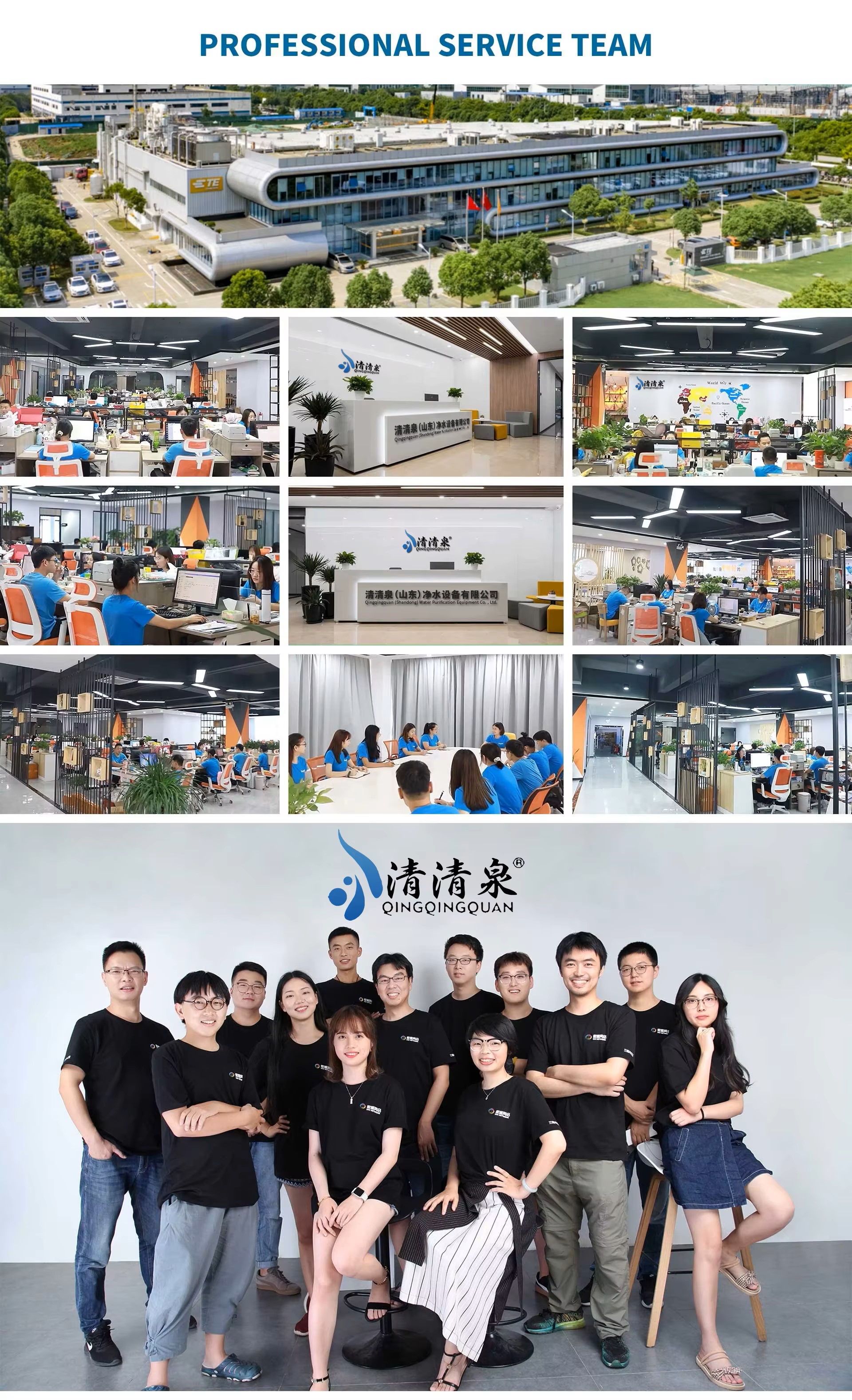
- Qingqingquan
- Shandong, China
- 20 days
- 300 units per month
This article systematically reviews the development history of the core technologies of water treatment equipment
The Leap Of Water Treatment Equipment From Traditional Filtration To Intelligentization(Ⅱ)
2. Core technologies of modern water treatment: high efficiency and precision
In recent years, the maturity of membrane separation, advanced oxidation and other technologies has greatly improved the efficiency of water treatment.
2.1 Membrane separation technology (core breakthrough)
Ultrafiltration (UF): pore size 0.01~0.1 micron, can intercept bacteria and viruses, used for drinking water purification.
Reverse osmosis (RO): desalination rate >95%, is a key technology for seawater desalination and ultrapure water preparation.
Nanofiltration (NF): between UF and RO, selectively removes divalent ions (such as calcium and magnesium), suitable for hard water softening.
Advantages: no chemical agents are required, high degree of automation, but membrane pollution problems still need to be optimized.
2.2 Advanced oxidation technology (AOPs)
Ozone oxidation: strong oxidizing property, can degrade difficult-to-decompose organic matter in pesticides and pharmaceutical wastewater.
Photocatalytic oxidation (such as TiO₂/UV): use ultraviolet rays to excite catalysts and decompose trace pollutants.
Application scenarios: treatment of high-concentration organic wastewater in the chemical and pharmaceutical industries.
2.3 Electrochemical technology
Electrodialysis (ED): Drives ion migration through electric field, used for brackish water desalination.
Capacitive deionization (CDI): Low energy consumption, suitable for miniaturized equipment.

3.Intelligent water treatment: Integration of IoT and AI
Digital technology is driving the transformation of the water treatment industry to "smart water".
3.1 Intelligent monitoring system
Sensor network: Real-time monitoring of parameters such as pH, turbidity, COD, etc., and data upload to the cloud.
AI predictive maintenance: Analyze equipment operation data through machine learning, and warn of membrane pollution or mechanical failure in advance.
3.2 Automated control
Adaptive dosing system: Dynamically adjust the dosage of the agent according to the change of water quality to reduce operating costs.
Unmanned water plant: Remote control + robot inspection, reduce manual intervention.
Case: A smart water platform optimizes the operation of the RO system through AI, reducing energy consumption by 15%.

4.Future trends: greening and resource utilization
4.1 Low-carbon technology: photovoltaic-driven seawater desalination, high-efficiency energy recovery devices (such as PX).
4.2 Zero discharge (ZLD): Evaporation crystallization + salt separation technology to achieve full reuse of wastewater.
4.3 Resource recovery: Extract scarce elements such as lithium and phosphorus from wastewater (such as phosphorus recovery technology in the Netherlands).
From sand filtration to RO membrane, from manual operation to AI optimization, the leapfrog development of water treatment technology is helping the sustainable use of global water resources. In the future, with the in-depth application of new materials (such as graphene membranes) and intelligent technologies, water treatment equipment will be more efficient and energy-saving, becoming the core pillar of the environmental protection industry.









































